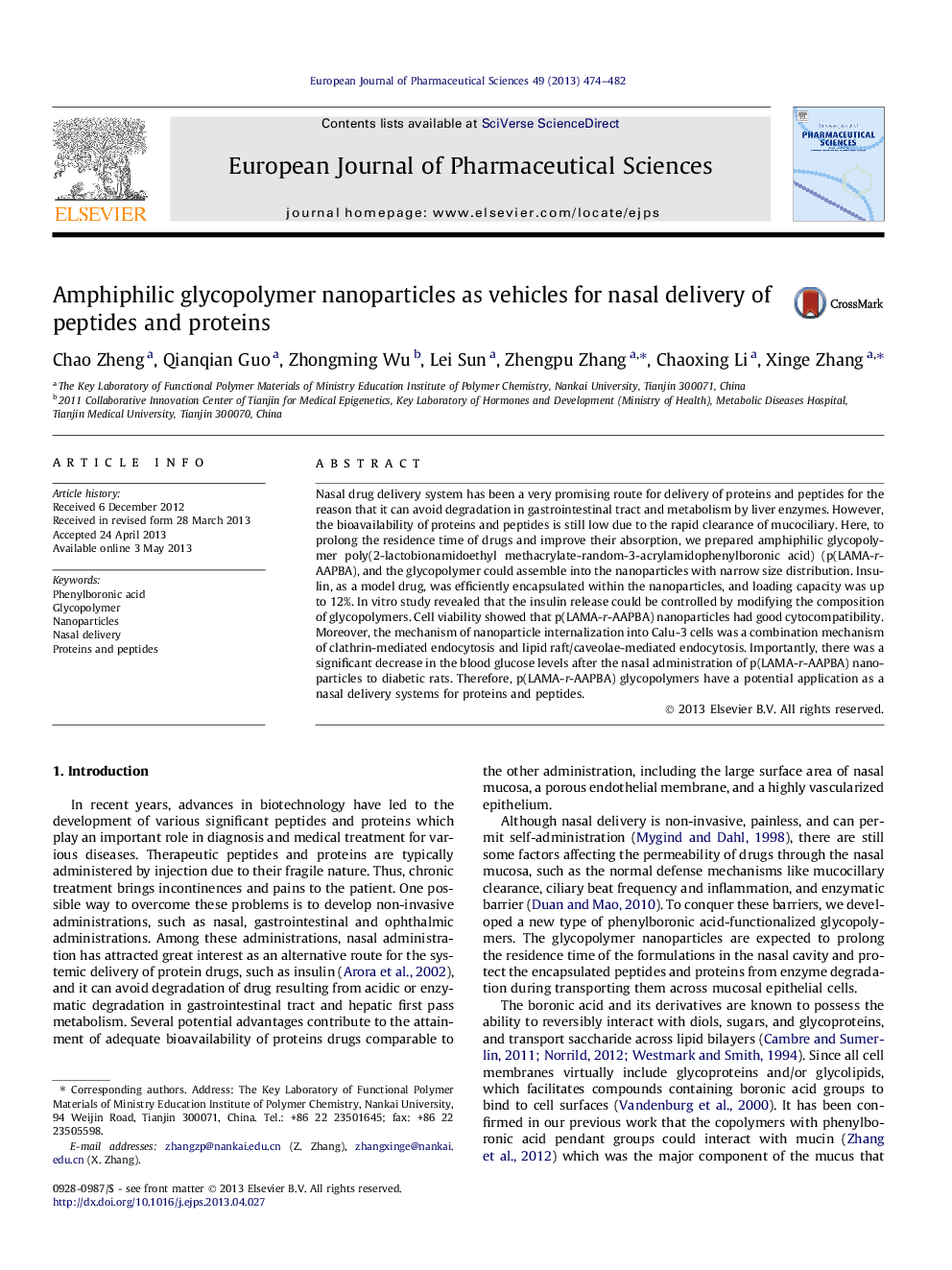| Article ID | Journal | Published Year | Pages | File Type |
|---|---|---|---|---|
| 2480839 | European Journal of Pharmaceutical Sciences | 2013 | 9 Pages |
Nasal drug delivery system has been a very promising route for delivery of proteins and peptides for the reason that it can avoid degradation in gastrointestinal tract and metabolism by liver enzymes. However, the bioavailability of proteins and peptides is still low due to the rapid clearance of mucociliary. Here, to prolong the residence time of drugs and improve their absorption, we prepared amphiphilic glycopolymer poly(2-lactobionamidoethyl methacrylate-random-3-acrylamidophenylboronic acid) (p(LAMA-r-AAPBA), and the glycopolymer could assemble into the nanoparticles with narrow size distribution. Insulin, as a model drug, was efficiently encapsulated within the nanoparticles, and loading capacity was up to 12%. In vitro study revealed that the insulin release could be controlled by modifying the composition of glycopolymers. Cell viability showed that p(LAMA-r-AAPBA) nanoparticles had good cytocompatibility. Moreover, the mechanism of nanoparticle internalization into Calu-3 cells was a combination mechanism of clathrin-mediated endocytosis and lipid raft/caveolae-mediated endocytosis. Importantly, there was a significant decrease in the blood glucose levels after the nasal administration of p(LAMA-r-AAPBA) nanoparticles to diabetic rats. Therefore, p(LAMA-r-AAPBA) glycopolymers have a potential application as a nasal delivery systems for proteins and peptides.
Graphical abstractFigure optionsDownload full-size imageDownload high-quality image (109 K)Download as PowerPoint slide
